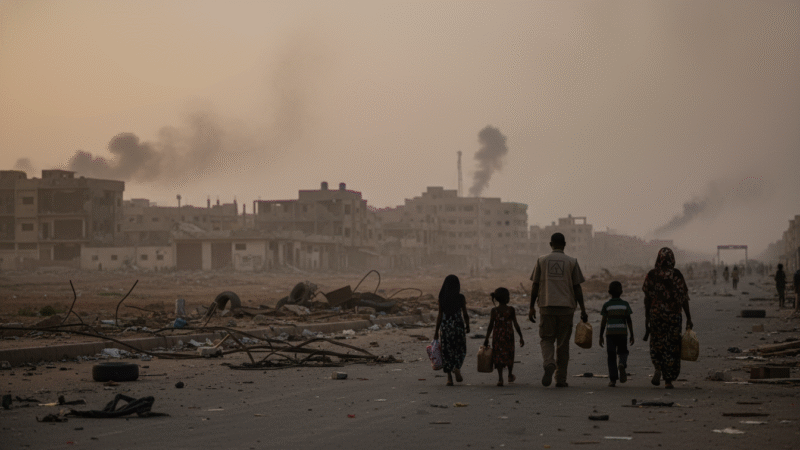From a modest drive-in restaurant in San Bernardino, California, to the world’s largest fast-food chain serving 69 million customers daily across 100+ countries, McDonald’s journey is one of the most fascinating business stories of the 20th century. But the tale behind those iconic golden arches involves more than just burgers and fries—it’s a story of innovation, controversy, and the transformation of American culture.
The Brothers Who Started It All
The McDonald’s story begins in 1940 with brothers Richard “Dick” and Maurice “Mac” McDonald, who opened a small drive-in restaurant called “McDonald’s Bar-B-Q” in San Bernardino. Initially, the restaurant served a typical drive-in menu of barbecue, burgers, and other items, employing 20 carhops to serve customers in their cars.
However, the brothers noticed something interesting: hamburgers accounted for 80% of their sales. This observation would lead to a revolutionary decision that changed the food industry forever.
“We were looking for a way to make our operation more efficient and profitable,” Dick McDonald once recalled. “The answer was right in front of us—focus on what sells best.”
The Speedee System Revolution
In 1948, the McDonald brothers made a bold move that would define fast food as we know it. They temporarily closed their restaurant and reopened with a radically simplified menu focusing primarily on hamburgers, cheeseburgers, fries, and beverages. More importantly, they introduced the “Speedee System”—an assembly-line approach to food preparation.
This system eliminated carhops, required customers to walk up to the counter, and promised food in 30 seconds or less. The kitchen was redesigned with specific stations for grilling, preparing burgers, and frying potatoes. Each employee had a specialized role, which dramatically increased efficiency and reduced costs.
The results were immediate: they could sell hamburgers for 15 cents (compared to 30 cents at competitors) while maintaining profitability through high volume and low labor costs.
Enter Ray Kroc: The Man Who Built an Empire
The McDonald brothers’ innovative system caught the attention of Ray Kroc, a 52-year-old milkshake machine salesman from Chicago. In 1954, Kroc visited the San Bernardino restaurant after noticing they had ordered eight of his Multimixer machines—more than most restaurants needed.
What Kroc saw amazed him: a small restaurant generating enormous revenue through systematic efficiency. He immediately recognized the franchise potential and convinced the brothers to let him become their franchising agent.
“I was never in the restaurant business. I was in the real estate business,” Kroc famously said, revealing his true strategy for McDonald’s expansion.
On April 15, 1955, Kroc opened the first franchised McDonald’s in Des Plaines, Illinois. Unlike the brothers, who were content with their successful local operation, Kroc had grander ambitions—he envisioned McDonald’s restaurants across America and beyond.
The Franchise Formula
Kroc’s genius lay not just in recognizing the McDonald’s system’s potential, but in creating a replicable franchise model. He established strict standards for:
- Quality control: Every McDonald’s had to meet identical standards for food preparation, cleanliness, and service
- Training: The company opened “Hamburger University” in 1961 to train franchise operators
- Real estate strategy: McDonald’s would own the land and buildings, leasing them to franchisees—creating a steady revenue stream
- Marketing consistency: Uniform branding, advertising, and customer experience across all locations
This approach ensured that a McDonald’s in New York would offer the same experience as one in Los Angeles, building unprecedented brand trust and recognition.
Cultural Impact and Expansion
By the 1960s, McDonald’s had become more than a restaurant chain—it was reshaping American culture. The company pioneered:
- Drive-through service (1975): Responding to America’s car culture
- Happy Meals (1979): Targeting families with children
- Breakfast menu (1972): Expanding beyond traditional meal times
- Global expansion: The first international McDonald’s opened in Canada in 1967
The golden arches became a symbol of American capitalism and culture, spreading worldwide as the company expanded internationally. Today, McDonald’s operates in 101 countries, making it one of the most recognizable brands globally.
Controversies and Challenges
McDonald’s success hasn’t come without criticism. The company has faced challenges regarding:
- Health concerns: Critics argue McDonald’s contributed to rising obesity rates
- Labor practices: Ongoing debates about wages and working conditions
- Environmental impact: Packaging waste and supply chain sustainability
- Cultural homogenization: Concerns about McDonald’s impact on local food cultures
The company has responded by introducing healthier menu options, improving sustainability practices, and adapting menus to local tastes in international markets.
The Brothers’ Fate
Ironically, the McDonald brothers who started it all didn’t share in the empire’s massive success. In 1961, Kroc bought out the brothers for$2.7 million—a substantial sum then, but a fraction of what the company would become worth. The brothers retained their original San Bernardino restaurant but had to remove the McDonald’s name.
Dick McDonald later reflected: “We could have been billionaires, but we were happy with what we had.”
Legacy and Modern McDonald’s
Today, McDonald’s serves approximately 69 million customers daily across more than 40,000 locations worldwide. The company’s market capitalization exceeds $200 billion, making it one of the world’s most valuable restaurant companies.
The McDonald’s story demonstrates how a simple idea—fast, consistent, affordable food—combined with systematic execution and ambitious vision, can create a global empire. From the brothers’ innovative Speedee System to Kroc’s franchise model, McDonald’s revolutionized not just the restaurant industry, but business itself.
The golden arches continue to evolve, embracing technology with mobile ordering, delivery services, and automated systems while maintaining the core principles that made McDonald’s a household name worldwide.









